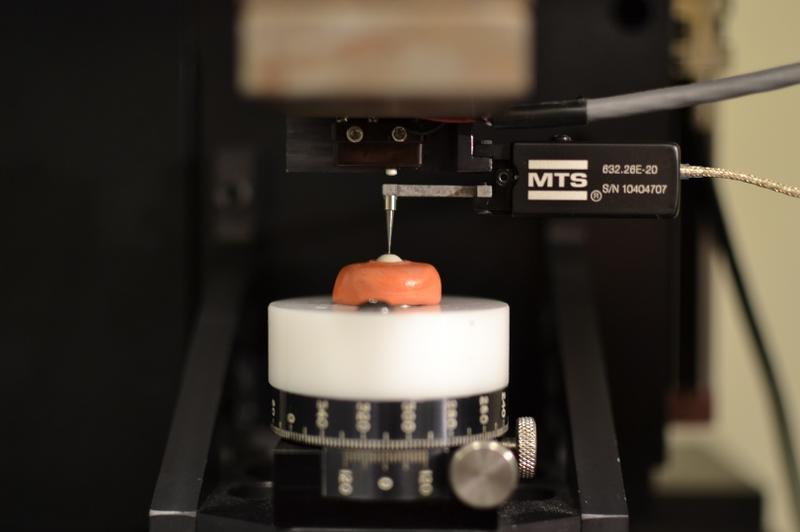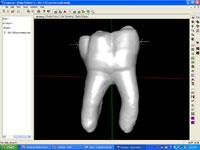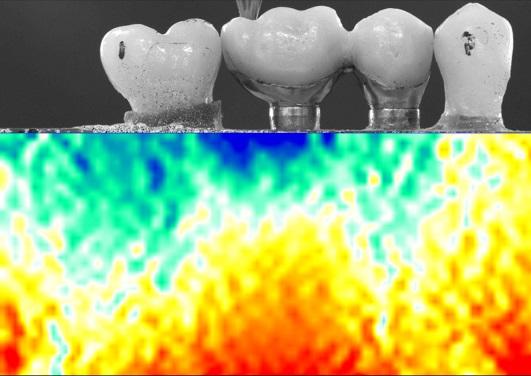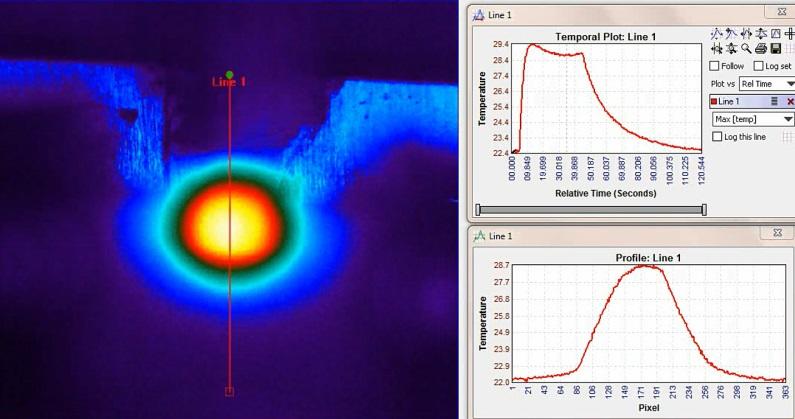Digital Profiling
This three-dimensional profiling system uses DC servo-motors and a null-point contact stylus to provide rapid profiling of the surface of a structure. It provides an accurate method for the measurement of changes in surface contour, and it can be used to measure either laboratory or clinically produced surface changes.
Optical Digitizer
The center also has access to a LAVA scanner kindly donated by 3M to the School of Dentistry. Data is gathered from the optical digitizer in the form of a "point cloud." This data is then transferred to software program to create 3-dimensional models.
AnSur Software
In order to quantify the changes in contour measured by the profiler, the in-house software program AnSur© (Regents, University of Minnesota) provides full three-dimensional fitting of surfaces, obtained before and after challenges, to locate and analyze changes that occur in terms of volume (mm³) and depth (µm).
Computer generated graphic image of a tooth showing wear on the enamel tissue.
The Tooth Explorer
Officially called A Digital Environment for Learning Oral Anatomy - a Student Oriented Approach, this teaching aid takes Oral Anatomy from traditional teaching methods into a highly efficient digital environment, using a software program to allow students to rotate or manipulate 3-D models of individual, anatomically correct teeth. This project was initiated by Associate Professor Maria R. Pintado in response to the Oral Anatomy students' frustrations with visualizing three-dimensional teeth when working from two-dimensional drawings. All deciduous and permanent human teeth are included in the software, which is available for use by students in several digital formats.
Digital Image Correlation (DIC)
The MDRCBB possesses a single-camera DIC system from LaVision. DIC provides an optical, non-contact technique for measuring surface deformation. It is especially powerful for measuring polymerization shrinkage of resin composites. Instead of an overall average shrinkage value, this method can provide full-field shrinkage strain measurement over the surface of a specimen, revealing the depth of cure through the decreasing shrinkage strain with increasing distance from the curing light.
The Movie below shows the shrinkage strain distribution within a dental composite specimen. The curing light was applied from the left. Red indicates more shrinkage.
Thermal Imaging
An infrared thermal camera (FLIR, SC655) is available for capturing changes in temperature on the surface of objects under investigation. Examples include the temperature increase in resin composites during curing and that in dental tissues during cavity preparation with a handpiece.





